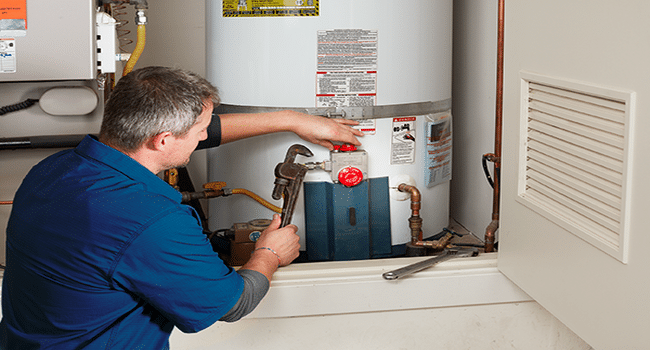As the chilly winds of winter start to blow, ensuring your home’s heater is in top condition becomes paramount. Not only does a broken heater make you less comfortable, but it can also be unsafe and cause your energy bills to go up. This guide will teach you everything you need to know to keep your home warm and cozy during the winter, from simple troubleshooting steps to more complicated fixes.
Understanding Your Heater
Most residential heating systems fall into one of three categories: forced-air systems, boilers, or heat pumps. Each type operates differently and may require distinct troubleshooting techniques.
Forced-Air Systems: These systems distribute heated air through ducts and vents. They typically consist of a furnace, which heats the air, and a blower fan that circulates it throughout the house.
Boilers: Boilers use water or steam to heat a space. They’re commonly found in older homes and may require periodic maintenance to ensure optimal performance.
Heat Pumps: Heat pumps bring heat inside from the ground or the air. They are known for not using a lot of energy and can be used to heat or cool.
Troubleshooting Common Issues
No Heat: If your heater isn’t producing heat, start by checking the thermostat settings. Ensure it’s set to “heat” mode and programmed to your desired temperature. If the thermostat works fine, check the heater or boiler for any signs of trouble, like a circuit breaker that has tripped or a pilot light that has gone out.
Insufficient Heat: However, if the heater is on but not warm enough, you should check the air filters. Clogged filters restrict airflow, reducing heating efficiency. Replace dirty filters with clean ones to improve performance. Additionally, check for blocked vents or ducts that could impede airflow.
Strange Noises: Should your heater be making odd sounds like banging, clicking, or squealing, it could mean that there are issues with the mechanics. These could be anything from loose parts to worn-out ones. Check the heater or boiler for damage and tighten any screws or bolts that aren’t tight enough. If the noise doesn’t go away, you might want to call a professional to help you figure out what’s wrong and fix it.
Uneven Heating: It’s possible that problems with your pipes or not enough insulation are making some parts of your home warmer or cooler than others. Check the ducts for holes, leaks, or other problems. If you find any, fix the holes or leaks with duct tape or mastic sealant. To keep heat from escaping, you might also want to add insulation to attics, basements, and crawl areas.
Frequent Cycling: If your heater goes on and off a lot, it could mean that the thermostat is broken or the flame sensor is dirty. Clean the flame sensor with a soft brush or sandpaper to remove any residue that may be interfering with its function. If the problem persists, replace the thermostat or contact a professional for further diagnosis.
DIY Heater Repairs
While some heater repairs may require professional expertise, many issues can be resolved with basic DIY techniques. Here are some tips for tackling common heater problems on your own:
Regular Maintenance: Schedule regular maintenance for your heater to keep it running smoothly. To do this, you need to clean or replace the air filters, grease any moving parts, and look for signs of wear and tear.
Thermostat Calibration: Calibrate your thermostat to ensure it accurately reflects the temperature in your home. Use a separate thermometer to compare readings and adjust the thermostat as needed.
Pilot Light Troubleshooting: If your gas heater or boiler has a pilot light, make sure it’s on and burning blue. To safely light the pilot light again if it goes out, follow the manufacturer’s directions. If you run into any problems, you should get help from a professional.
Clearing Vents and Registers: Make sure that nothing is blocking any of the vents or openings, like furniture, curtains, or other junk. Vents that are blocked can stop air from moving, which makes heating less effective.
Sealing Leaks: Inspect windows, doors, and other potential sources of drafts for air leaks. Use weatherstripping or caulking to seal gaps and prevent heat loss.
Insulating Pipes: If you have a boiler or heat pump, make sure that any pipes that are visible are insulated so that they don’t freeze when it gets cold. Broken or frozen lines can cost a lot to fix and cause water damage.
Conclusion
Maintaining a warm and cozy home during the winter months requires a functioning heater. By understanding the basics of heater repair and implementing regular maintenance practices, you can ensure your heating system operates efficiently and reliably. Whether you’re troubleshooting common issues or performing DIY repairs, safety should always be a top priority. When in doubt, don’t hesitate to seek assistance from qualified professionals to keep your home comfortable and safe throughout the winter season.
